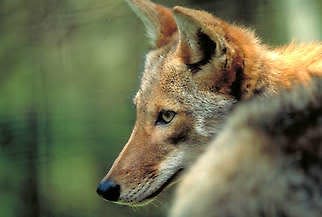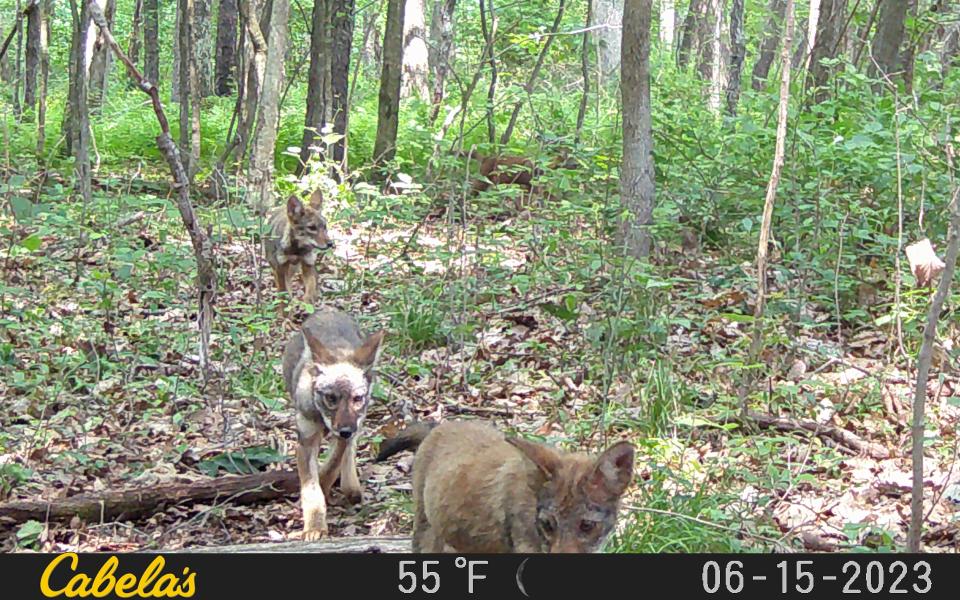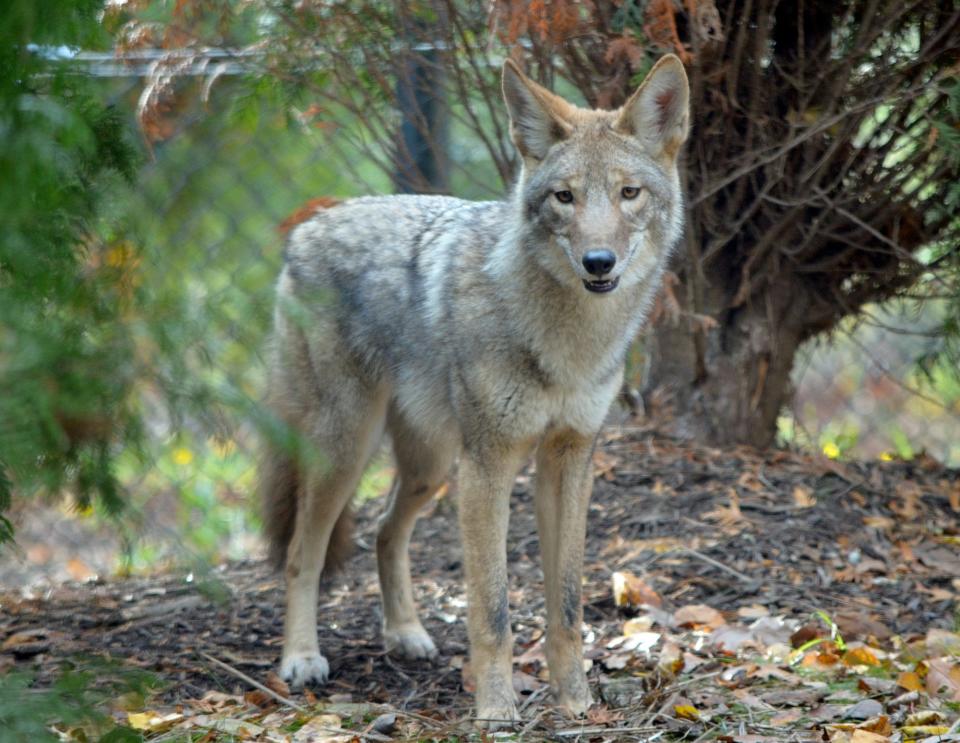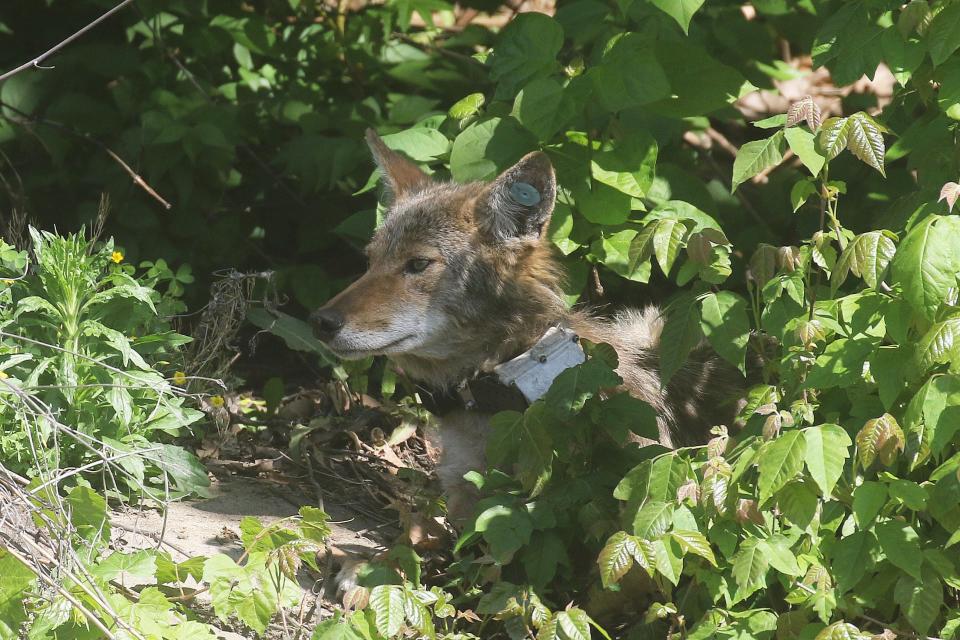Clever coyotes may be victims of their own success
They are known by many different names, including: Medicine Wolf; Brush Wolf; Prairie Wolf; American Jackal; Song Dog; and Burrowing Dog. Likewise, their reputations varied between indigenous peoples and European settlers and they were/are perceived as wise; tricksters; gluttons; liars; scavengers; and killers (particularly of cats, chickens, small dogs, and livestock). Similar to the Saturday morning cartoons, many Native American tribes also considered coyotes to be friendly bumblers who made many mistakes and were often hurt or killed as a result; thus, teaching humans what tricks and strategies to avoid.

Coyotes from Arctic Circle to Costa Rica
Coyotes are our area’s largest wild canid and are seen in all seasons, weather, and at almost any time of the day or night. Coyotes presently range from the Arctic Circle southward to Costa Rica and, over the past 150 years, have greatly benefited from human settlement, habitat modifications, and wildlife control: particularly control and local eliminations of Gray and Red Wolves throughout most of the wolves’ original ranges. Adult coyotes are approximately equal in size to medium-sized dogs (54 inches head and body length) and have relatively long and bushy tails. Their ears are upright and pointy ears and they have relatively pointy, narrow, black nose pads. Overall body color ranges from grayish to tan sprinkled with black and white hairs over much of the sides, back, and face; whereas, the ears and legs are a more distinct brown to almost ocherous (yellowish to orange) color. The belly is whitish and the tail often has a dark stripe on the dorsal side and ends in a black tip.

Coyotes occur throughout our area in almost any and all imaginable (and a few unimaginable) habitats. These versatile canids are found in open prairies and cultivated lands, mesquite pasturelands and woods, streamside and riparian areas, and within parks, dump grounds, alleyways and other locations in our cities and suburbs. A relatively near and accessible source of drinking water is likely the most limiting or determining factor for most coyote populations; although, coyotes may travel between two and 20 miles per day.
An omnivore for sure
Coyotes are omnivores and their broad diets and choices of foodstuffs are another reason for their success. A coyote’s diet varies according to the availability of food and season of the year and may include rodents, rabbits, insects, birds and bird eggs, various fruits and vegetables, larger items such as deer, goats, sheep, and cattle, and even the dung of animals such as cattle and horses (known as coprophagia). Although known to successfully prey upon deer and large-sized livestock when in small packs, coyotes are opportunistic hunters and the consumption of most of the larger animals is probably the result of scavenging upon carcasses after the animals have died of natural causes.
Coyotes are infamous for raiding chicken pens and gardens: particularly watermelon patches, where they take a bite or two from a melon and then move on to a different melon! Mesquite beans, prickly pear fruits, wild grapes, acorns, and pecans are also consumed as-well-as various human refuse and garbage items in urban settings. Coyotes are also often blamed and maligned for preying upon small, domestic dogs and cats in urban and rural settings. A personal observation of the coyote’s eclectic (yet still discriminating) dietary choices occurred one morning when a colleague and I left our research camp on the Padre Island National Seashore and returned at noon to discover that coyotes had broken into one of our food lockers and literally eaten a large container of Miracle Whip (yes, the container and its contents) yet had seemed to spurn all of our granola bars!

Coyote parents are protective of pups
Adult coyotes form pair bonds during the breeding season of January to March and will dig into steep banks, bar ditches, fence rows, and along rocky ledges to construct a natal burrow for their pups. Otherwise, coyotes usually prefer to remain above-ground during other seasons. A litter of six young coyotes (on average) is produced in April or May and the training period of the coyote pups occurs during the summer. The pups are fed and taught by both parents.
Although not completely monogamous, coyote parents may remain together for multiple years and even form small, mostly familial packs under favorable conditions. Small coyote packs may be better able to defend larger territories and capture and defend larger prey and carrion meals than individual or paired coyotes. Dispersal of young coyotes usually begins about 4 -5 months after their birth with peak dispersals around November and December.
Communication and social ties between coyotes are maintained through their distinctive calls, which consist of a series of yips and end in more lengthy howls. Barking and distress calls are also utilized. Calling is most frequent during early morning and dusk hours but may also precede abrupt changes of weather. Coyotes are normally not aggressive and seek to avoid contact, hide, or run away from humans and other threats. In fact, coyotes are very adept at running and are known to reach speeds of up to 45 mph. I once observed a coyote lie down in an open wheat field, curl up into a tight ball, hide its head with its tail, and attempt to mimic a tumbleweed in order to escape notice! If cornered, the rather unique threat display of coyotes is to arch their backs and open their mouths in a wide gape.
Predator control methods temporary, sometimes backfire
Even though our area coyotes occasionally prey upon some animals that we wish they wouldn’t (such as house cats, small dogs, calves, lambs, and fawns), more often than not, coyotes usually only take larger animals which are sick, injured, or already dead. Predator control methods focused upon coyote removal have proven to be temporarily effective but have also helped emphasize the Coyote’s important role in our ecosystem. Area residents and family members told me of a time in the 1950’s when large numbers of coyotes were removed from the area by government trappers and one result was population explosions of mice, rats, and rabbits the following year, resulting in crop and pastureland damage from these uncontrolled pests. Coyotes perform a tremendous service by removing carrion from our environment and also helping control and balance rabbit, rodent, and other wild animal populations.

In conclusion, although the Coyote isn’t universally loved, perhaps all of us can find something to admire, like, or even smile and laugh about when we see or hear these Medicine Wolves. They have survived and prospered in the face of tremendous changes to their environments, so perhaps there is some magic or medicine in them after all.
Jim Goetze is a retired professor of biology and former chairperson of the Natural Sciences Department of Laredo College with an avid interest in all aspects of the natural world. He can be contacted at gonorthtxnature@gmail.com
This article originally appeared on Wichita Falls Times Record News: Much to admire about the wily coyote

